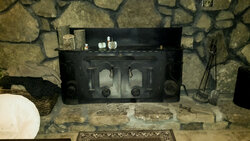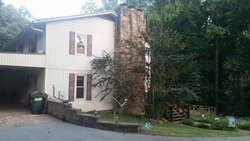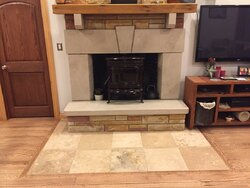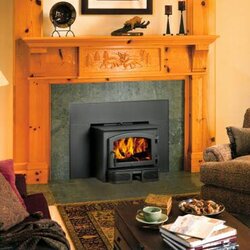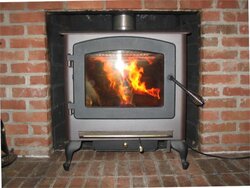First post!
So, I bought this house about two months ago and I'd like to replace our wood stove insert. It is a Dynamic Stoveworks Insert with blowers. The reasons I'm wanting to replace the stove are a) aesthetics, b) burning less wood/efficiency, c) to take advantage of the tax credit, and d) wood smell. I'm pretty sure the odor is coming from worn out gaskets and probably needs sweeping. I've got an inspector coming to inspect and possibly clean our chimney in the meantime. I do not know the age of this wood stove. The last chimney inspection performed during the previous winter says our house a 26' masonry chimney with flue tile. I reached behind the insert and measured our fireplace at 30"x30". I don't now how deep it is, but the hearth is 18".
My question: Is the heat loss to masonry that big of an issue against an insert? I've been looking at a Lopi Stove and as I understand it their freestanding stoves are exactly the same as their inserts.
I'm not asking for which stove to buy.....more of guidance on which route to take to get there!
So, I bought this house about two months ago and I'd like to replace our wood stove insert. It is a Dynamic Stoveworks Insert with blowers. The reasons I'm wanting to replace the stove are a) aesthetics, b) burning less wood/efficiency, c) to take advantage of the tax credit, and d) wood smell. I'm pretty sure the odor is coming from worn out gaskets and probably needs sweeping. I've got an inspector coming to inspect and possibly clean our chimney in the meantime. I do not know the age of this wood stove. The last chimney inspection performed during the previous winter says our house a 26' masonry chimney with flue tile. I reached behind the insert and measured our fireplace at 30"x30". I don't now how deep it is, but the hearth is 18".
My question: Is the heat loss to masonry that big of an issue against an insert? I've been looking at a Lopi Stove and as I understand it their freestanding stoves are exactly the same as their inserts.
I'm not asking for which stove to buy.....more of guidance on which route to take to get there!


